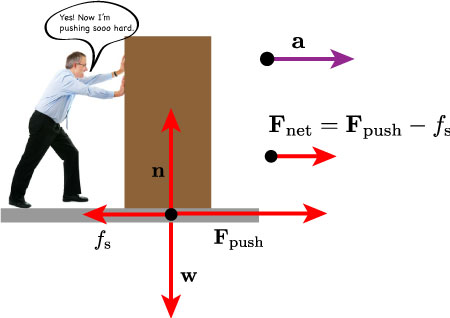An object with a mass of #7 kg# is on a surface with a kinetic friction coefficient of # 8 #. How much force is necessary to accelerate the object horizontally at # 4 m/s^2#?
1 Answer
Let us apply Newton's Laws to solve this problem.
Explanation:
According to Newton's 2nd Law of Motion (
This would be the force necessary to move the body if there were not any other forces (as friction). However, in our case, a stronger force is required to compensate friction.
So, let us take 28 N as net force.
Now, we are going to find friction force. This equals to:
So net force will be:
We can see next picture to understand it better:

Now, having

